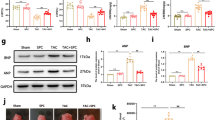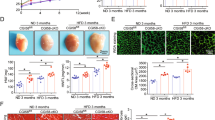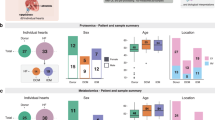Abstract
Aim:
Previous studies have demonstrated that glycine (GLY) markedly reduces lipopolysaccharide (LPS)-induced myocardial injury. However, the mechanism of this effect is still unclear. The present study investigated the effect of GLY on cytosolic calcium concentration ([Ca2+]c) and tumor necrosis factor-α (TNFα) production in cardiomyocytes exposed to LPS, as well as whether the glycine-gated chloride channel is involved in this process.
Methods:
Neonatal rat cardiomyocytes were isolated, and the [Ca2+]c and TNFα levels were determined by using Fura-2 and a Quantikine enzyme-linked immunosorbent assay, respectively. The distribution of the GLY receptor and GLY-induced currents in cardiomyocytes were also investigated using immunocytochemistry and the whole-cell patch-clamp technique, respectively.
Results:
LPS at concentrations ranging from 10 ng/mL to 100 μg/mL significantly stimulated TNFα production. GLY did not inhibit TNFα production induced by LPS at concentrations below 10 ng/mL but did significantly decrease TNFα release stimulated by 100 μg/mL LPS and prevented an LPS-induced increase in [Ca2+]c, which was reversed by strychnine, a glycine receptor antagonist. GLY did not block the isoproterenol-induced increase in [Ca2+]c, but did prevent the potassium chloride-induced increase in [Ca2+]c in cardiomyocytes. Strychnine reversed the inhibition of the KCl–stimulated elevation in [Ca2+]c by GLY. In chloride-free buffer, GLY had no effect on the dipotassium hydrogen phosphate-induced increase in [Ca2+]c. Furthermore, GLY receptor α1 and β subunit-immunoreactive spots were observed in cardiomyocytes, and GLY-evoked currents were blocked by strychnine.
Conclusion:
Cardiomyocytes possess the glycine-gated chloride channel, through which GLY prevents the increase in [Ca2+]c and inhibits the TNFα production induced by LPS at high doses in neonatal rat cardiomyocytes.
Similar content being viewed by others
Log in or create a free account to read this content
Gain free access to this article, as well as selected content from this journal and more on nature.com
or
References
Rajendra S, Lynch JW, Schofield PR . The glycine receptor. Pharmacol Ther 1997; 73: 121–46.
Lu DX, Li CJ, Fu YM, Wang HD . Inhibitory effect of glycine on endotoxin pyrogenicity. Chin J Pathophysiol 1996; 12: 235–8.
Zhong Z, Wheeler MD, Li X, Froh M, Schemmer P, Yin M, et al. L-Glycine: a novel antiinflammatory, immunomodulatory, and cytoprotective agent. Curr Opin Clin Nutr Metab Care 2003; 6: 229–40.
Ikejima K, Iimuro Y, Forman DT, Thurman RG . A diet containing glycine improves survival in endotoxin shock in the rat. Am J Physiol Gastrointest Liver Physiol 1996; 271: G97–103.
Froh M, Thurman RG, Wheeler MD . Molecular evidence for a glycine-gated chloride channel in macrophages and leukocytes. Am J Physiol Gastrointest Liver Physiol 2002; 283: G856–63.
Ikejima K, Qu W, Stachlewitz RF, Thurman RG . Kupffer cells contain a glycine-gated chloride channel. Am J Physiol Gastrointest Liver Physiol 1997; 272: G1581–6.
Qi RB, Zhang JY, Lu DX, Wang HD, Wang HH, Li CJ . Glycine receptors contribute to cytoprotection of glycine in myocardial cells. Chin Med J (Engl) 2007; 120: 915–21.
Qi RB, Lu DX, Wang HD, Zhou H, Wang HH, Li CJ . Effect of glycine on endotoxin-induced myocardial cell injury of the isolated rat heart. Chin Pharmacol Bull 2005; 21: 738–41.
Stamm C, Cowan DB, Friehs I, Noria S, del Nido PJ, McGowan FX Jr . Rapid endotoxin-induced alterations in myocardial calcium handling: Obligatory role of cardiac TNF-α. Anesthesiology 2001; 95: 1396–405.
Comstock KL, Krown KA, Page MT, Martin D, Ho P, Pedraza M, et al. LPS-induced TNF-α release from and apoptosis in rat cardiomyocytes: obligatory role for CD14 in mediating the LPS response. J Mol Cell Cardiol 1998; 30: 2761–75.
Wheeler M, Stachlewitz RF, Yamashina S, Ikejima K, Morrow AL, Thurman RG . Glycine-gated chloride channels in neutrophils attenuate calcium influx and superoxide production. FASEB J 2000; 14: 476–84.
Hwang KC, Lim S, Kwon HM, Bae YS, Kang SM, Chung KH, et al. Phospholipase C-δ1 rescues intracellular Ca2+ overload in ischemic heart and hypoxic neonatal cardiomyocytes. J Steroid Biochem Mol Biol 2004; 91: 131–8.
Yang J, Wang HD, Lu DX, Wang YP, Qi RB, Li J, et al. Effects of neutral sulfate berberine on LPS-induced cardiomyocyte TNF-α secretion, abnormal calcium cycling, and cardiac dysfunction in rats. Acta Pharmacol Sin 2006; 27: 173–8.
Shao Q, Saward L, Zahradka P, Dhalla NS . Ca2+ mobilization in adult rat cardiomyocytes by angiotensin type 1 and 2 receptors. Biochem Pharmacol 1998; 55: 1413–8.
Wheeler MD, Thurman RG . Production of superoxide and TNF-α from alveolar macrophages is blunted by glycine. Am J Pysiol Lung Cell Mol Physiol 1999; 277: L952–9.
Miller GW, Schnellmann RG . Cytoprotection by inhibition of chloride channels: the mechanism of action of glycine and strychnine. Life Sci 1993; 53: 1211–5.
Yu JZ, Quamme GA, McNeill JH . Altered [Ca2+]i mobilization in diabetic cardiomyocytes: responses to caffeine, KCl, ouabain, and ATP. Diabetes Res Clin Pract 1995; 30: 9–20.
Geoghegan-Morphet N, Burger D, Lu X, Sathish V, Peng T, Sims SM, Feng Q . Role of neuronal nitric oxide synthase in lipopolysaccharide-induced tumor necrosis factor-alpha expression in neonatal mouse cardiomyocytes. Cardiovasc Res 2007; 75: 408–16.
Sun W, Lu DX, Ding Y, Li CJ . Effects of glycine on the combining rate of endotoxin to monocytes and endotoxic configuration. Chin J Pathophysiol 1998; 14: 359–61.
Yamashina S, Konno A, Wheeler MD, Rusyn I, Rusyn EV, Cox AD, et al. Endothelial cells contain a glycine-gated chloride channel. Nutr Cancer 2001; 40: 197–204.
Qu W, Ikejima K, Zhong Z, Waalkes MP, Thurman RG . Glycine blocks the increase in intracellular free Ca2+ due to vasoactive mediators in hepatic parenchymal cells. Am J Physiol Gastrointest Liver Physiol 2002; 283: G1249–56.
Miller GW, Schnellmann RG . A putative cytoprotective receptor in the kidney: relation to the neuronal strychnine-sensitive glycine receptor. Life Sci 1994; 55: 27–34.
Zhang JY, Lu DX, Qi RB, Wang HD, Wang YP, Fu YM, et al. Expression of glycine receptor in rat cardiomyocytes. Chin J Pathophysiol 2006; 22: 1070–3.
Ruiz-Meana M, Pina P, Garcia-Dorado D, Rodríguez-Sinovas A, Barba I, Miró-Casas E, et al. Glycine protects cardiomyocytes against lethal reoxygenation injury by inhibiting mitochondrial permeability transition. J Physiol 2004; 558: 873–82.
Acknowledgements
This project was supported by grants from the National Natural Science Foundation of China (No 30470718) and the Guangdong Natural Science Foundation (No 04105844).
The authors are grateful to Prof Li-xin CHEN, Dr Lin-yan ZHU, and Mr Lin-jie YANG in the school of medicine, Ji-nan University, for the electrophysiological experiments.
Author information
Authors and Affiliations
Corresponding author
Rights and permissions
About this article
Cite this article
Wang, Hd., Lü, Xx., Lu, Dx. et al. Glycine inhibits the LPS-induced increase in cytosolic Ca2+ concentration and TNFα production in cardiomyocytes by activating a glycine receptor. Acta Pharmacol Sin 30, 1107–1114 (2009). https://doi.org/10.1038/aps.2009.106
Received:
Accepted:
Published:
Issue date:
DOI: https://doi.org/10.1038/aps.2009.106
Keywords
This article is cited by
-
The effects of verapamil and its combinations with glutamate and glycine on cardiodynamics, coronary flow and oxidative stress in isolated rat heart
Journal of Physiology and Biochemistry (2017)
-
The role of glycine in regulated cell death
Cellular and Molecular Life Sciences (2016)



